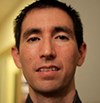Overview
To generate the most accurate diagnosis possible, clinicians should be armed with imaging technologies that provide accurate and quantitative information about the state of the patient. The goal of the CTIPM Imaging Technology Core is to work with clinicians to develop and apply state-of-the-art quantitative imaging technologies that maximize clinical utility and improve diagnostic accuracy. From the design of custom pulse sequences for image acquisition to novel post-processing algorithms, the Imaging Technology Core strives to provide the clinician with the best possible information to better inform their diagnoses.
Clinical Applications:
Advanced MRI image acquisition
- State-of-the-art diffusion and structural pulse sequences provide maximum clinical utility in the shortest scan time possible, allowing for a better patient experience
- Real-time motion correction techniques, including Prospective Motion Correction (PROMO) [1] allow for high quality MRI scans without motion artifact, reducing acquisition time and increasing diagnostic utility [2].
- MRA Pulmonary and/or Aortic Arteriogram
Advanced post-processing techniques
- Novel diffusion techniques, which include our novel cancer detection method known as Restriction Spectrum Imaging (RSI), generate quantitative information and allow clinicians to precisely locate tumor boundaries.
- Multi-modal image processing and segmentation technologies to provide quantitative information on longitudinal change and volumetrics.
- Integration with surgical planning software allows RSI output to be imported and used by most surgical planning platforms. This provides surgeons with spatially precise information of a tumor’s location.
Directors
|
 Nathan S. White, PhD Nathan S. White, PhD
Assistant Professor Radiology at UC San Diego
Director for Imaging Technology, CTIPM
|
|
 Joshua Kuperman, PhD Joshua Kuperman, PhD
Assistant Project Scientist, Multimodal Imaging Laboratory at UC San Diego
Director for Imaging Technology, CTIPM
|
[1] White NS, Roddey C, Shankaranarayanan A, Han E, Rettmann D, Santos J, Kuperman J, Dale A. PROMO: Real-time prospective motion correction in MRI using image-based tracking. Magn Reson Med, 2010 Jan; 63(1):91-105.
[2] Kuperman JM, Brown TT, Ahmadi ME, Erhart MJ, White NS, Roddey JC, Shankaranarayanan A, Han ET, Rettmann D, Dale AM. Prospective motion correction improves diagnostic utility of pediatric MRI scans. Pediatr Radiol. 2011 Jul 21.
[3] White NS, Leergaard TB, D’Arceuil H, Bjaalie J, Dale AM. Probing tissue microstructure with restriction spectrum imaging: histological and theoretical validation. Hum Brain Mapp. 2013; 34(2), 327-46.
[4] White, NS; McDonald CR, Farid N, Kuperman J, Karow D, Schenker-Ahmen NM, Bartsch H, Rakow-Penner R, Holland D, Shabaik A, Bjornerud A, Hope T, Hattangadi-Gluth J, Liss M, Parsons JK, Chen CC, Raman S, Margolis D, Reiter RE, Marks L, Kesari S, Mundt AJ, Kane CJ, Carter BS, Bradley WG, Dale, AM. Diffusion-Weighted Imaging in Cancer: Physical Foundations and Applications of Restriction Spectrum Imaging. Cancer Res. 2014 Sep1;74(17):4638-4652